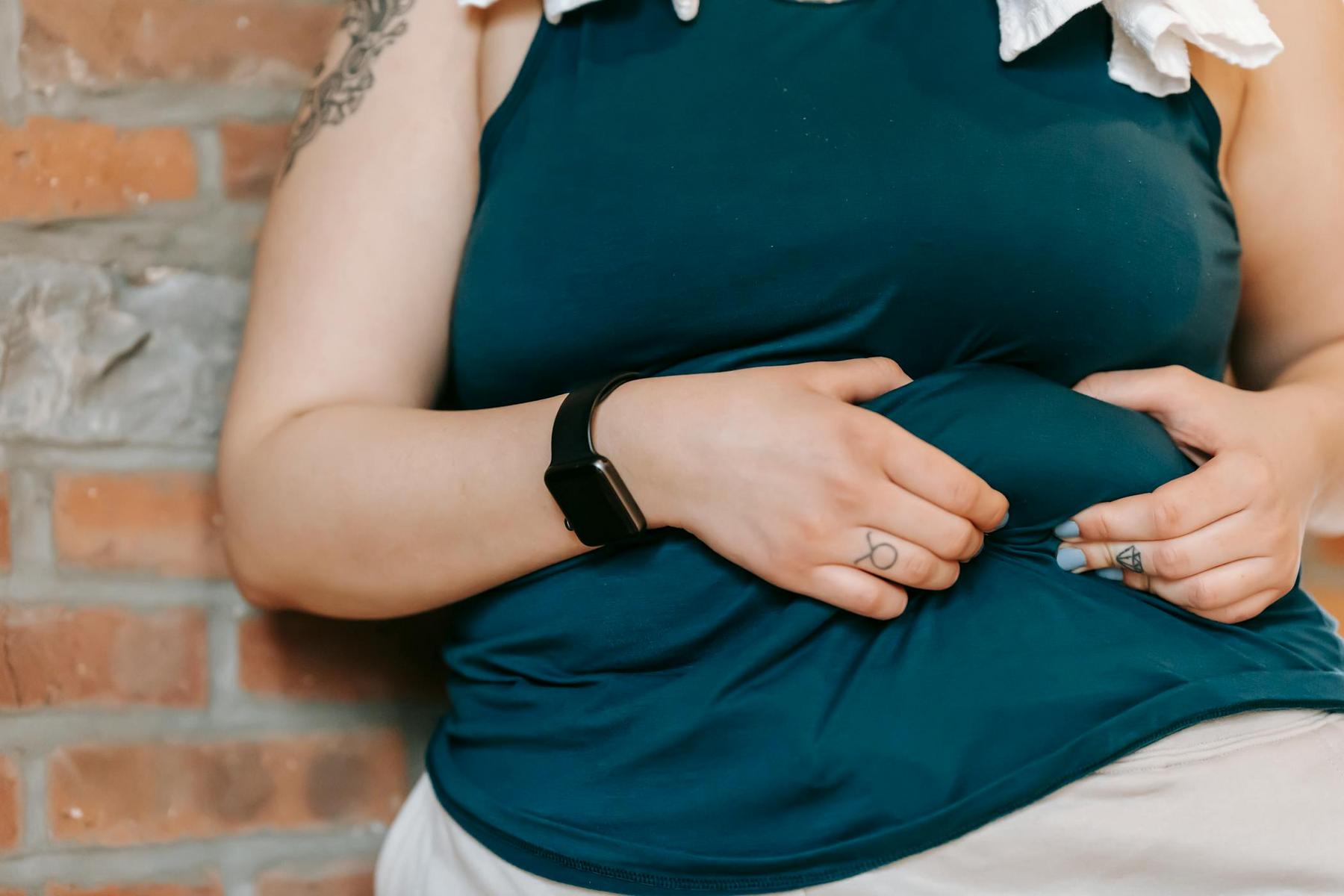The rising tide of anxiety and chronic stress in modern society has reached unprecedented levels. Since the COVID-19 pandemic, anxiety disorders have surged by an estimated 25.6% globally, with nearly one-third of individuals experiencing clinically significant anxiety at some point in their lifetime. This escalating burden extends beyond individual suffering, imposing substantial economic costs through healthcare expenditure and reduced productivity whilst simultaneously increasing the risk of cardiometabolic disorders, neurodegenerative disease, and all-cause mortality.
Yet amidst this crisis lies a paradox: one of the most effective interventions for stress and anxiety requires no equipment, incurs zero cost, produces no side effects, and can be practised anywhere in as little as five minutes daily. Breath-focused meditation—the intentional manipulation of breathing patterns to influence physiological and psychological states—has emerged from systematic research as a remarkably powerful, accessible, and evidence-based approach to managing stress, enhancing mood, and restoring balance to an overtaxed nervous system.
What Is Breath-Focused Meditation and How Does It Work?
Breath-focused meditation encompasses a diverse array of breathing techniques that deliberately alter respiratory patterns to produce measurable changes in autonomic nervous system function, brain activity, and psychological well-being. Unlike passive awareness of natural breathing, these practices involve conscious control of breath rate, depth, rhythm, and nostril selection to activate specific physiological pathways.
The fundamental mechanism underlying all breath-focused meditation techniques involves modulation of the vagus nerve—cranial nerve X—which serves as the primary conduit for parasympathetic nervous system activation. This “rest and digest” response directly counteracts the sympathetic “fight or flight” system that becomes chronically activated during prolonged stress. Extended exhalations particularly stimulate vagal afferents, increasing heart rate variability (HRV) and promoting the release of acetylcholine whilst simultaneously suppressing stress hormones including cortisol and adrenaline.
Systematic research spanning 58 clinical studies with 5,407 total participants has demonstrated that 75% of breathing interventions effectively reduce stress and anxiety. Meta-analyses reveal small-to-medium effect sizes (g = -0.35 for stress, g = -0.32 for anxiety, g = -0.40 for depressive symptoms) that represent meaningful therapeutic benefit with an exceptional safety profile with zero reported serious adverse effects across reviewed studies.
The neurophysiological changes extend beyond the peripheral nervous system. Electroencephalography studies consistently reveal increased alpha wave activity (10-13 Hz) associated with relaxation and reduced mental activity, alongside decreased theta waves linked to anxiety reduction. Functional magnetic resonance imaging research identifies activation patterns across the prefrontal cortex, anterior cingulate cortex, hippocampus, hypothalamus, and periaqueductal grey—regions intimately involved in emotion regulation, stress hormone control, and autonomic function.
Critically, these physiological changes translate directly into psychological benefits. Research demonstrates that participants experiencing the greatest respiratory rate reduction also report the most substantial daily improvements in positive affect (r = -0.24, p < 0.05), establishing a clear mechanistic link between slower breathing, parasympathetic activation, and mood enhancement.
Which Breathing Techniques Are Most Effective for Stress Reduction?
Systematic reviews examining effectiveness across different breathing techniques reveal important distinctions in both implementation and outcomes. The evidence establishes five primary categories of breath-focused meditation, each with distinct characteristics and clinical applications.
Cyclic Sighing: The Superior Technique for Mood Enhancement
Cyclic sighing emerges from randomised controlled trials as the most effective technique for daily mood improvement. This practice involves a double inhalation through the nose—first comfortable, followed by a deeper “sip” of air—concluded with a prolonged, slow exhalation through the mouth. Stanford Medicine research tracking 111 healthy volunteers performing five minutes daily for 28 days revealed that cyclic sighing produced an average daily increase in positive affect of 1.89 points (p = 0.025) alongside significant reductions in negative affect (-1.48 points daily, p < 0.0001).
The superiority of cyclic sighing appears mechanistically linked to its emphasis on extended exhalation. By prolonging intrathoracic pressure duration, this technique maximally stimulates the vagus nerve, increases respiratory sinus arrhythmia, and modulates heart rate variability toward relaxation states. Importantly, cyclic sighing produces significantly greater respiratory rate reduction throughout the day compared to other interventions, and these physiological changes correlate directly with mood improvements.
Box Breathing: The Structured Approach to Autonomic Balance
Box breathing employs an equal-duration pattern—typically four seconds for each component: inhalation, breath hold, exhalation, and breath hold. This structured 4-4-4-4 rhythm can be adjusted to individual carbon dioxide tolerance (3-3-3-3 or 5-5-5-5 patterns). The Stanford trial revealed box breathing produced substantial daily improvements in positive affect (1.84 points, p = 0.026) and negative affect reduction (-0.83 points, p < 0.0001).
Research with post-bariatric surgery patients utilising modified box breathing ratios (4-7-8 pattern) demonstrated significant state anxiety reduction (p = 0.007) alongside improved quality of life scores. Among patients with chronic obstructive pulmonary disease, 4-7-8 breathing produced extremely statistically significant reductions in both anxiety and depression (p < 0.0001) whilst simultaneously improving breathing capacity and reducing dyspnoea symptoms.
The equal ratios characterising box breathing create cardiorespiratory coherence, optimising baroreceptor feedback involved in blood pressure regulation whilst enhancing heart rate variability. The cognitive engagement required for counting through each phase provides additional benefit through distraction from stress-inducing thoughts.
Diaphragmatic Breathing: Universal Effectiveness Across Populations
Diaphragmatic or deep breathing—characterised by conscious engagement of the diaphragm muscle with emphasis on abdominal rather than chest expansion—demonstrates remarkable effectiveness across diverse populations. Systematic reviews reveal that 17 of 20 studies incorporating deep diaphragmatic breathing yielded significant stress and anxiety benefits, with particularly impressive results among high-anxiety populations where all four interventions achieved 100% effectiveness.
Research with high-anxiety adults completing 12 individual training sessions over eight weeks plus twice-daily home practice demonstrated significant Beck Anxiety Inventory reductions (p < 0.0001) that persisted at eight-week follow-up. Accompanying physiological improvements included decreased heart rate and respiratory rate alongside enhanced vagal tone.
The mechanism involves direct engagement of the primary respiratory muscle, increasing tidal volume (air per breath) without elevating respiratory rate. This produces more efficient gas exchange whilst reducing the work of breathing accessory muscles, collectively enhancing parasympathetic tone and reducing physiological arousal.
Slow-Paced Breathing: Optimal Rate for Heart Rate Variability
Intentional reduction of breathing rate to approximately six breaths per minute using external pacing cues (metronome applications, video guidance) consistently produces parasympathetic activation and psychological well-being. Analysis of 15 peer-reviewed studies examining physiological correlates of slow breathing reveals that rates below 10 breaths per minute consistently induce autonomic and central nervous system changes associated with enhanced mood and reduced anxiety.
Optimal breathing rates appear to centre around 5.5 to 6 breaths per minute, though individual variation exists. At this frequency, heart rate variability increases specifically in the low-frequency power band (0.04-0.15 Hz) associated with parasympathetic activation, whilst respiratory sinus arrhythmia significantly elevates. Electroencephalography reveals increased alpha power and decreased theta power—patterns consistently associated with relaxation and improved emotional control.
Slow-paced breathing produces measurable blood pressure reductions averaging 5.8 mmHg systolic alongside enhanced baroreceptor reflex sensitivity and improved arterial compliance. Brain imaging studies identify increased activity across the prefrontal cortex, motor cortex, parietal areas, thalamus, hippocampus, hypothalamus, and periaqueductal grey—collectively supporting the broad neurophysiological impact of this practice.
Alternate Nostril Breathing: Advanced Technique Requiring Training
Alternate nostril breathing (Anulom Vilom)—a yogic pranayama technique involving alternation between nasal passages for inhalation and exhalation—demonstrates effectiveness particularly when combined with adequate guided training. Systematic reviews indicate this technique requires 2-4+ guided sessions plus multiple practice sessions over time to achieve therapeutic effects, particularly among yoga-naive individuals.
The mechanism involves nasal stimulation modulating brain activity across the piriform cortex, amygdala, and hippocampus through olfactory epithelium mechanoreceptor activation. This rhythmic breathing entrainment affects neural oscillations and associates with specific electroencephalography patterns including increased alpha and decreased theta waves. Clinical applications span post-stroke anxiety reduction to general stress management in healthy adults.
How Should Breath-Focused Meditation Be Practised for Maximum Benefit?
Systematic analysis of 72 breathing interventions across 58 clinical studies reveals specific implementation factors dramatically influencing effectiveness. Understanding these components enables optimisation of practice for individual circumstances.
Effective interventions consistently avoid fast-only breathing practices (exceeding 20 breaths per minute) and sessions shorter than five minutes. Rapid breathing may trigger anxiety symptoms in susceptible individuals and proves ineffective for stress reduction, whilst sessions under five minutes provide insufficient time for parasympathetic nervous system engagement. Only 80% of very brief sessions demonstrate effectiveness compared to 90-95% effectiveness for sessions exceeding five minutes.
Three core components characterise maximally effective interventions: human-guided training, multiple sessions, and long-term practice. Human guidance—whether live or pre-recorded—improves technique accuracy and adherence even when limited to a single five-minute instructional session. High-anxiety populations benefit particularly from 2-4+ guided sessions, whilst technically complex practices like alternate nostril breathing require more extensive training for naive practitioners.
Multiple sessions dramatically amplify effectiveness. Single-session interventions achieve only 43% effectiveness (10 of 23 studies), whereas 93% of effective interventions (50 of 54 studies) incorporated multiple practice sessions separated by minutes, hours, or days. This cumulative practice effect becomes statistically significant across time, with daily tracking studies revealing progressive mood improvements that intensify with continued adherence.
Long-term practice—defined as six or more sessions spanning at least one week—characterises 93% of effective interventions (27 of 29 studies). Daily practice appears optimal, producing measurable day-by-day mood enhancement and anxiety reduction. Critically, benefits become more pronounced with adherence, demonstrating a statistically significant interaction term between practice compliance and therapeutic effect magnitude.
| Implementation Factor | Effectiveness Impact | Recommendation |
|---|---|---|
| Session Duration | 20 minutes: No additional benefit | 5-10 minutes optimal |
| Breathing Pace | Fast-only (>20 bpm): Ineffective/harmfulSlow (<10 bpm): Consistently effective | 6 breaths per minute optimal; Exhale-emphasis enhances effects |
| Training Guidance | No guidance: Variable effectiveness1 session: Adequate for general population | 1+ human-guided session recommended; 2-4+ sessions for high-anxiety |
| Practice Frequency | Single session: 43% effectiveMultiple sessions: 93% effective | Daily practice optimal; Minimum 3-5 days weekly |
| Practice Duration | Short-term (<1 week): VariableLong-term (≥1 week): 93% effective | 6+ sessions over 1+ week; 4-8 weeks for sustained benefits |
Notably, effectiveness proves independent of population type, group versus individual practice format, and whether at-home practice supplements guided sessions. This universality demonstrates the broad applicability of breath-focused meditation across ages, health statuses, and anxiety levels.
What Are the Measurable Benefits of Daily Breathing Practice?
Randomised controlled trials incorporating daily psychological tracking reveal the temporal dynamics of breathing practice benefits. The Stanford Medicine 28-day study examining five-minute daily sessions provides particularly robust data on day-to-day changes.
Positive affect—the experience of pleasant emotions and engagement—increases measurably with daily breathwork practice. Cyclic sighing produces an average daily gain of 1.89 points on the Positive and Negative Affect Schedule, whilst box breathing yields 1.84-point daily increases. These improvements prove statistically significant (p < 0.026) and accumulate across study days, with participants reporting progressively enhanced mood as practice continues. Breathwork produces significantly greater positive affect improvement than mindfulness meditation alone (p < 0.05), suggesting unique mood-enhancing properties.
Negative affect—the experience of unpleasant emotions including distress, anxiety, and irritability—decreases substantially with all breathing interventions. Daily reductions range from -0.62 to -1.48 points depending on technique, with all breathwork groups achieving highly significant effects (p < 0.0001). These reductions manifest immediately following practice sessions and sustain throughout the day.
State anxiety—acute, situational anxiety levels—declines by an average of 3-4 points per five-minute session on the State-Trait Anxiety Inventory scale. Cyclic sighing reduces state anxiety by 3.85 points daily, box breathing by 3.75 points, and all reductions achieve high statistical significance (p < 0.0001). Improvements occur immediately post-session and persist throughout the day, collectively producing substantial anxiety relief over the intervention period.
Respiratory rate—breaths per minute during resting states—decreases significantly across all breathwork groups compared to mindfulness meditation (p < 0.05). This physiological change correlates negatively with mood improvement (r = -0.24, p < 0.05), establishing that participants experiencing the greatest respiratory rate reduction report the largest positive affect gains. This mechanistic link supports the theoretical framework connecting slow breathing, parasympathetic activation, and psychological benefit.
Research with clinical populations demonstrates similar magnitude effects. Post-bariatric surgery patients practising modified box breathing show significant state anxiety reduction (p = 0.007) alongside quality of life improvements. Patients with chronic obstructive pulmonary disease experience extremely significant anxiety and depression reduction (p < 0.0001) plus enhanced breathing capacity and reduced dyspnoea. High-anxiety adults completing eight-week diaphragmatic breathing training demonstrate Beck Anxiety Inventory reductions (p < 0.0001) sustained at follow-up.
Importantly, 90% of participants in clinical trials report positive subjective experiences, indicating high acceptability alongside objective benefit. Adherence rates exceed those typical for many behavioural interventions, likely reflecting the rapid onset of perceived benefit and minimal time investment required.
How Does Breath-Focused Meditation Compare to Other Approaches?
Comparative effectiveness research positions breath-focused meditation within the broader landscape of anxiety and stress management approaches.
Breathwork demonstrates superiority to mindfulness meditation for specific outcomes. Direct comparison within the Stanford study revealed significantly greater mood improvement (p < 0.05) and respiratory rate reduction (p < 0.05) with breathing techniques compared to mindfulness meditation, though both approaches effectively reduce anxiety and negative affect. Breathwork produces therapeutic effects more rapidly—evident within five-minute sessions—whereas mindfulness meditation typically requires 20-30 minute sessions for comparable benefit. The cumulative practice effect also accelerates more rapidly with breathwork, with day-by-day mood progression noticed earlier in the intervention period.
These findings should not diminish the substantial evidence supporting mindfulness meditation, which demonstrates effectiveness across hundreds of studies and may offer longer-term trait changes with extended practice. Rather, the data suggest complementary mechanisms, with breathwork providing more direct physiological intervention through vagal stimulation whilst mindfulness addresses cognitive patterns and cultivates present-moment awareness. Sequential or combined use may produce additive benefits, though rigorous comparative research remains limited.
The safety profile of breath-focused meditation proves exceptional. Across all reviewed studies encompassing thousands of participants, zero serious adverse effects have been reported. Minor side effects—primarily transient lightheadedness during initial practice—occur rarely and typically resolve with technique modification or increased experience.
The accessibility and practical advantages prove equally compelling. Breath-focused meditation requires zero financial investment and no equipment. The five-minute daily time requirement proves minimal compared to other interventions, and the practice remains accessible regardless of socioeconomic status, geographical location, or healthcare system access.
Integrating Breathwork Into a Holistic Wellness Approach
The evidence establishes breath-focused meditation as a cornerstone practice for stress resilience and emotional well-being, yet optimal integration within broader lifestyle contexts requires thoughtful consideration. Research demonstrates that breathing techniques complement rather than replace other wellness interventions, producing synergistic benefits when incorporated into comprehensive health strategies.
Daily implementation opportunities span morning practice to commence the day with parasympathetic activation and enhanced mood, mid-day work breaks to restore focus and reduce afternoon stress accumulation, pre-performance anxiety management before presentations or challenging situations, and acute stress response during unexpected difficult moments. Athletes utilise breathwork before competition, whilst clinicians increasingly recommend techniques for pre-procedural anxiety and post-operative recovery.
The five-minute minimum effective dose proves remarkably sustainable. Systematic reviews reveal that consistency matters more than duration, with daily practice producing superior outcomes compared to sporadic longer sessions. Integration into existing routines—morning coffee ritual, lunch break, pre-sleep preparation—enhances long-term adherence. Mobile applications providing guided sessions, daily reminders, and progress tracking support habit formation, whilst wearable biofeedback displaying heart rate variability data may enhance motivation through visible physiological changes.
Research demonstrates effectiveness combines optimally with other evidence-based wellness practices including physical exercise, adequate sleep hygiene, nutritious eating patterns, meaningful social connection, and time in natural environments. Breath-focused meditation appears to amplify benefits of yoga practice, support deeper meditation states, and enhance recovery from physical training. The universal accessibility—requiring no equipment, location, or special preparation—enables practice integration across diverse life circumstances.
Critically, the practice empowers individuals with immediate, portable stress management capacity. Unlike interventions requiring professional consultation or scheduled appointments, breathing techniques provide instant availability during anxiety-provoking situations. This autonomy proves particularly valuable for individuals seeking active participation in their wellness journey.
Population-specific considerations support broad applicability. Youth demonstrate improved test performance and reduced examination anxiety. Older adults experience cardiovascular benefits and mood enhancement. Healthy adults achieve rapid stress prevention and resilience building. Clinical populations frequently benefit as complements to standard treatments. The 81% effectiveness rate among acute clinical populations and 64% effectiveness among chronic conditions establishes therapeutic relevance across the health spectrum.
Moving Forward: Evidence-Based Practice for Modern Stress
The convergence of systematic reviews, randomised controlled trials, and meta-analyses establishes breath-focused meditation as an evidence-based, highly accessible, and remarkably safe intervention for the stress and anxiety epidemic confronting contemporary society. With 75% of breathing interventions demonstrating effectiveness, small-to-medium therapeutic effect sizes, zero serious adverse effects across thousands of research participants, and complete elimination of cost barriers, these techniques deserve prominent consideration within comprehensive wellness approaches.
The research clarifies implementation factors optimising outcomes: five-to-ten minute daily sessions avoiding fast-only breathing patterns, human-guided initial training (even a single instructional session), multiple practice sessions over time, and long-term daily commitment for sustained benefits. Cyclic sighing emerges as particularly effective for mood enhancement, box breathing provides structured autonomic balance, diaphragmatic breathing demonstrates universal applicability, slow-paced breathing optimises heart rate variability, and alternate nostril breathing offers advanced options for experienced practitioners.
The measurable daily improvements—averaging 1.89-point positive affect increases and 3-4 point state anxiety reductions per five-minute session—translate into meaningful quality of life enhancement over weeks and months of consistent practice. The direct correlation between respiratory rate reduction and mood improvement establishes a clear mechanistic pathway: slower breathing activates vagal pathways, stimulates parasympathetic tone, modulates heart rate variability, and produces measurable brain activity changes that collectively reduce stress whilst enhancing emotional regulation.
Perhaps most significantly, breath-focused meditation represents a democratisation of wellness intervention. The elimination of financial barriers, equipment requirements, and dependency on healthcare system access creates universal availability regardless of socioeconomic status. The five-minute daily commitment proves feasible within even the most demanding schedules. The immediate onset of benefits enhances adherence through rapid positive reinforcement. And the exceptional safety profile enables exploration without risk of adverse consequences.
As anxiety disorders continue their upward trajectory globally, evidence-based interventions requiring minimal resources whilst producing meaningful therapeutic effects assume increasing importance. Breath-focused meditation fulfils this need whilst simultaneously empowering individuals with portable stress management capacity accessible at any moment. For those seeking to reclaim autonomy over their stress response and cultivate resilience amidst modern life’s demands, the simple yet profound act of intentional breathing offers a scientifically validated pathway forward.
How long does it take to experience benefits from breath-focused meditation?
Research demonstrates that benefits emerge rapidly, with measurable improvements evident immediately following five-minute sessions. Daily tracking studies reveal statistically significant positive affect increases and anxiety reductions occurring within the first practice session, though effects accumulate and intensify with continued daily practice. While physiological changes such as reduced respiratory rate can manifest within a single session, sustained long-term benefits require ongoing practice, as discontinuation may lead to a gradual return toward baseline states.
Can breathing techniques help with severe anxiety or should they only be used for mild stress?
Systematic reviews indicate that breathing techniques are beneficial across the clinical spectrum, proving highly effective among high-anxiety populations (100% effectiveness in some studies), 81% effective in acute clinical conditions, and 64% effective in chronic conditions. While they can complement treatment for severe anxiety, individuals with severe anxiety or panic disorders should seek professional guidance and consider combining these techniques with other therapeutic approaches.
Which breathing technique should beginners start with?
Evidence suggests that cyclic sighing and diaphragmatic breathing are optimal starting points for beginners due to their simplicity, rapid effectiveness, and strong research support. Cyclic sighing, which involves a double inhalation followed by a prolonged exhalation, offers significant mood improvement, while diaphragmatic breathing is universally effective and easier to master with minimal instruction.
How does breath-focused meditation differ from simply taking deep breaths when stressed?
While taking deep breaths can provide momentary relief, breath-focused meditation involves structured techniques with specific parameters—such as optimal breathing rates (around six breaths per minute) and extended exhalation—to maximally stimulate the vagus nerve. This structured approach leads to more pronounced physiological effects, including enhanced heart rate variability and brain activity changes, resulting in greater and more sustained reductions in stress and anxiety.
Are there any situations where breathing techniques should be avoided?
Breath-focused meditation has an exceptional safety profile with zero reported serious adverse effects. However, fast-only breathing patterns (exceeding 20 breaths per minute) can be counterproductive and may trigger anxiety, so they should be avoided. Individuals with certain respiratory conditions, a history of seizures, or severe panic disorders should consult healthcare professionals before beginning a regular practice to ensure it is safe for their specific circumstances.













